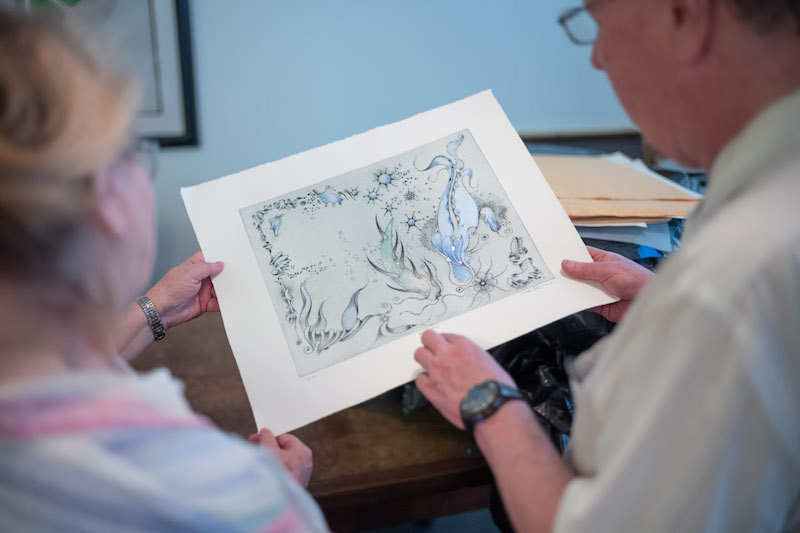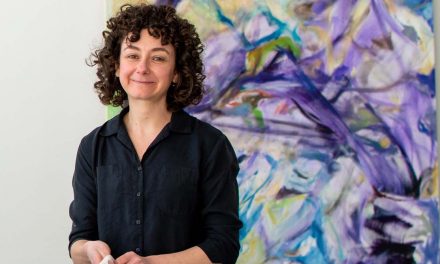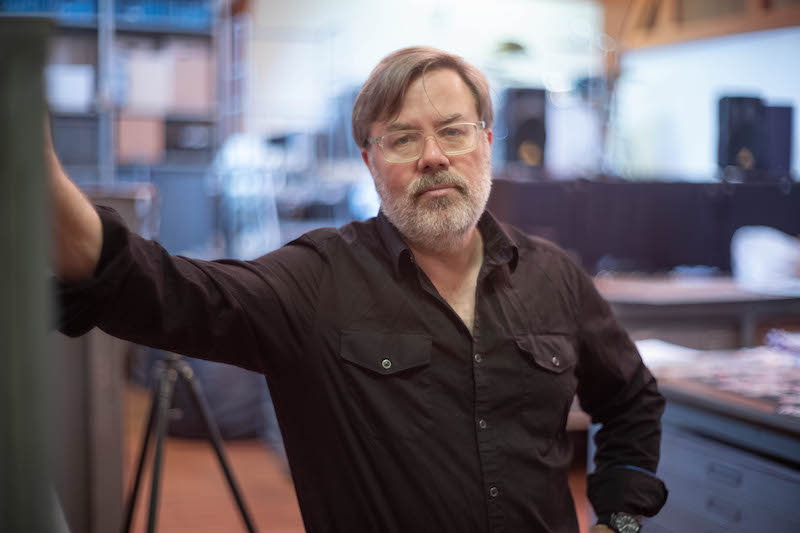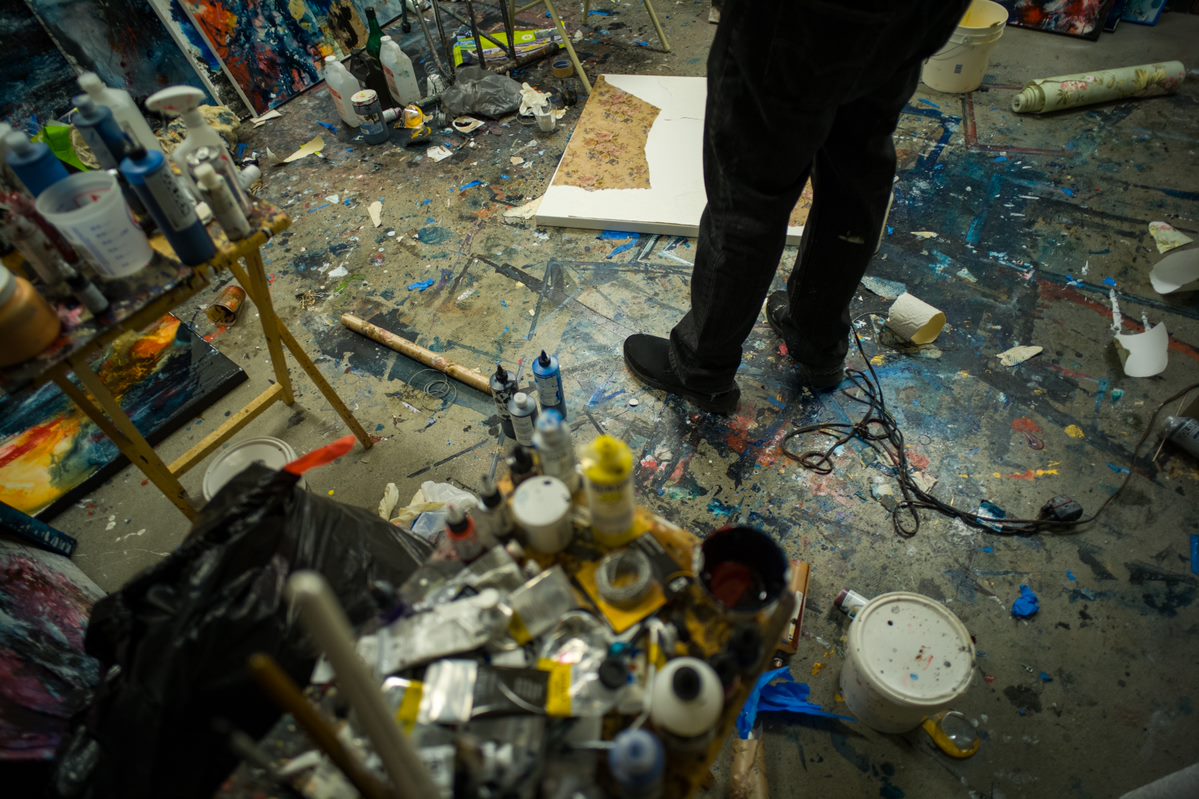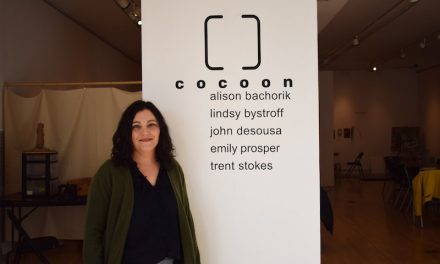Photos: Richard Lovrich
“Might you have 10 minutes to spare to see something you might find interesting?”
With a full afternoon ahead, I nonetheless accepted this post-buffet lunch invitation by M. A. Waheed, proprietor of Schenectady eatery Taj Mahal. He led me through a sun-dappled afternoon streetscape to a white storefront on Barrett Street bearing neither sign, window display, nor house number. My expectations, despite my respect for Mr. Waheed, were measured at best. Yet my curiosity was piqued. What lay beyond?
The insatiable drive for human beings to make art, to leave a mark, is often spurred by the introduction of a new technology. Such was the case with the invention of paper by the Chinese and the development of a nascent form of the art of printmaking around 200 B.C. More than a thousand years would pass before many forms of the techniques we now think of as common in printmaking would proliferate.
Where can you find a collection of prints covering most of this history? The Library of Congress, Metropolitan Museum, New York Public Library and the Smithsonian, all boast of massive collections.
Facing a glass door, flanked by windows with unpromising off-kilter shades, I could scarcely imagine how my afternoon schedule was about to be shattered and my mind, frankly, blown. That door opened and I entered the modest gallery and extensive collection of the Print Club of Albany.

The Print Club has, without an address of its own, operated in the Capital Region quietly, collecting, promoting and disseminating fine art prints since it was established in 1933 by passionate collectors. Before I extend the favor and invite you into the club, let’s take a short tour through the history of the art form.
Printmaking as an art form has, from its inception, democratized the process of art ownership, in the same manner that printing of the typographic kind spread the word far and wide. Though an artist might toil for hours or days to make the master in stone or other medium called the matrix, hundreds of prints can be made from it. Therefore, each artwork is considered an original, not a reproduction and can be available to enrich the collections of many more art lovers and at a price commensurate with their numbers.
This allows collectors to own a work of art, not simply similar to a reproduction of, but a work of art precisely the same as that in a museum or university’s collection. If the print is a limited edition —signed and numbered—you will be the only owner of print 35 of, say, 200 in the world.
There are many printmaking techniques. Defining a print, Charles Semowich, curator (among other duties) of the Print Club of Albany said, “The matrix (original stone or plate, etc.) is the only place that the artwork exists. If you take a painting and you make a photograph of it, that’s a reproduction. We don’t have any interest in that.”
An incomplete list of print techniques includes engraving, woodcut, linocut, collagraphy, aquatint, lithography, screen printing and mezzotint. The limits of this article could not do justice to even a terse definition of those.
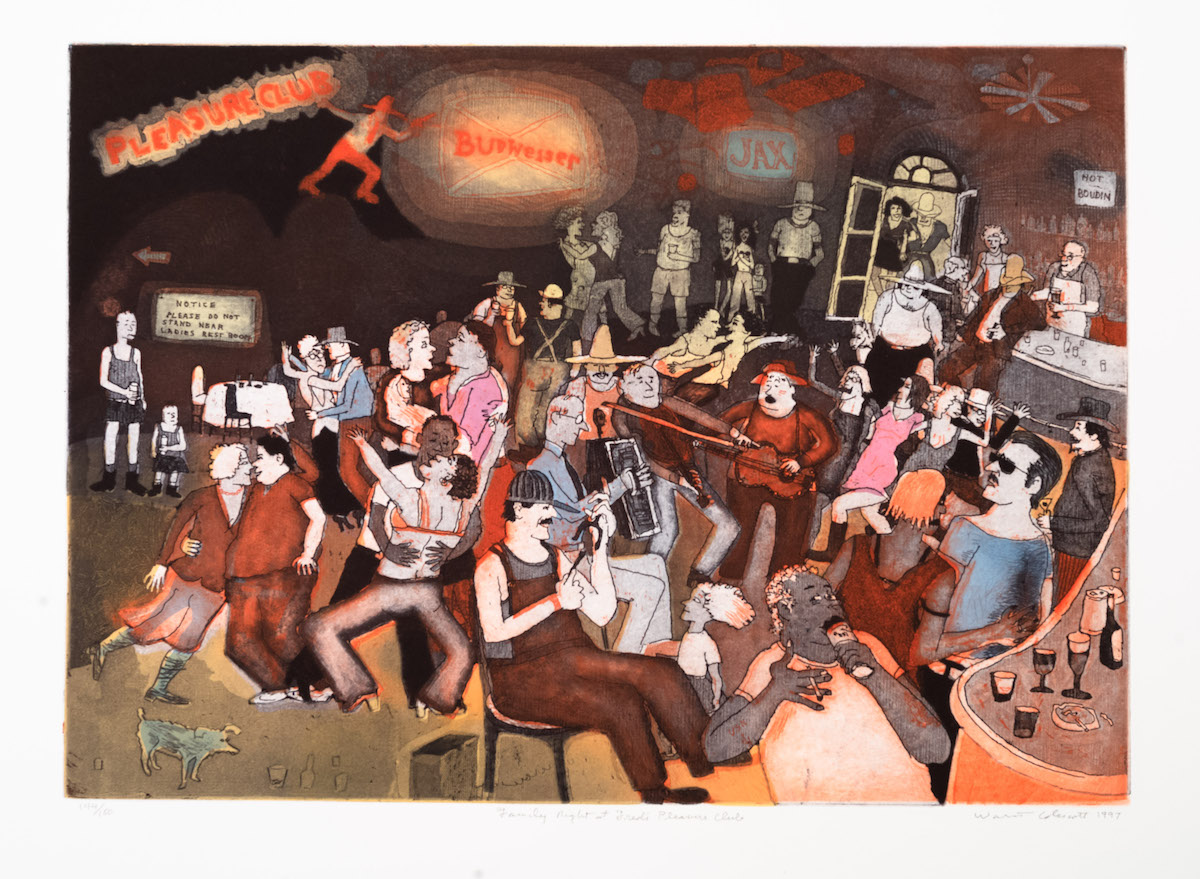
Warrington Colescot
“Family Night at Fred’s Pleasure Club” 1997
Color Etching 22 x 30 inches
For 85 years, The Print Club provided the most ingenious method for its member collectors to acquire art prints on a budget. Each year they partner with an internationally renowned printmaker to produce a limited-edition presentation.
Club members’ annual membership benefits include this print, accompanied by a colophon, a document describing the artist and piece. In selecting the artist and the next print for the member’s annual edition, the services of the club’s volunteer selection chair, Tim Kragt, are called upon. The club leadership may have a few names in mind, and it is Kraft’s job to research those artists and determine whose work is the best fit for the edition and collection.
Variety of subjects is an important consideration. Over the years, prints have represented landscape, portrait, still life, industry and nature. A broad range of artistic styles have been employed as well, ranging from photorealism, impressionism and abstract expressionism, to magical realism and psychedelia.

Jeanette Pasin Sloan “Wave Cups” 2011
Lithograph – 13.25 X 13 inches

Dorothy Lathrop “Goldfish” 1944
Wood Engraving – 6.125 X 7.25 inches.
In 1944, Dorothy Lathrop was chosen to create a wood engraving called “Goldfish.” Born in Albany at the end of the 19th century, Lathrop was an illustratrator whose images graced many popular children’s books. Her “Animals of the Bible, A Picture Book” (1938) won the first Caldecott Medal, honoring the year’s most distinguished American picture book.
Painter and printmaker Rockwell Kent won the commission in 1946 with his moving lithograph “Good Bye Day.” Although known for his landscapes, often sourced from far flung adventures, Kent is also remembered for his progressive politics. That’s hinted at in the club’s print, depicting a weary woman carrying a heavy bucket, bracing herself in a doorway, lit by and looking back upon a sun setting on her work day.
Imaginatively reduced in form, but extravagant in texture and hues, Joseph Domijian’s “The Peacock,” strutted its way to members in 1960. Domijian’s work can be found at The Metropolitan Museum of Art, Smithsonian and Library of Congress. Both the Hungarian and Chinese governments have awarded him national prizes.
How much is your membership presentation print worth? As with all art, that depends on the artist, the print in question, its age, rarity and recent sales prices, among other factors.
Kent’s “Good Bye Day,” for example, can be purchased on the open market today for $1,500, but this of course is not the true value of the art. The true value of an artwork is what contributes to your environment and how it makes you feel. In fact, that it makes you feel at all is value enough.
In addition to the presentation prints, the club’s collection has come primarily from donations. Artists sometimes donate a piece, a series or, when they retire or die, their entire output, including correspondence.
Collectors may also wish to see their cherished prints cared for and potentially displayed by the club and may donate in their lifetimes or by leaving their collection in their wills. Galleries also donate to the collection.

Harry Schokler “Vermont Church” 1971
Serigraph – 10 x 13 inches.
One example is the Park West Gallery, a huge institution located in Southfield, Michigan, but with roots in the Capital Region. Founder and CEO Albert Scaglione and his son, Mark Scaglione, gallery president, have donated many important pieces by such acclaimed artists as the Israeli sculptor and experimental artist Yaacov Agam.
After decades of shows, revealing works selected from those in storage occasionally hung at a variety of spaces around the region, the Club now has its permanent home and display spaces. The plan is to begin by granting access to visitors on Thursdays to themed shows and openings, though they have not yet set this in motion. As education is key to the club’s mission, classes and lectures are being planned as well. No need to wait for them to get up to speed though, as you can become a member today and receive your first annual print.
The club is considering some computer-generated techniques, although for the foreseeable future, it would strain the definition in their charter to include them. The conscious configuration of a string of ones and zeros, floating on a cloud, would need to be elevated in rank as a medium, alongside stone, metal and wood. The club’s officers hint that change may be inevitable.
Whatever the future holds, it seems that it will include the continued existence of this local treasure. Charles Semowich said it best, “What is life if we don’t have arts?”
Anybody who is interested in membership in the Print Club of Albany should visit pcaprint.org. You may also contact the club by phone via Charles Semowich at (518) 449-4756 or Joe Galu at joegalu@hotmail.com.
Print Club of Albany 150 Barrett St., Schenectady

